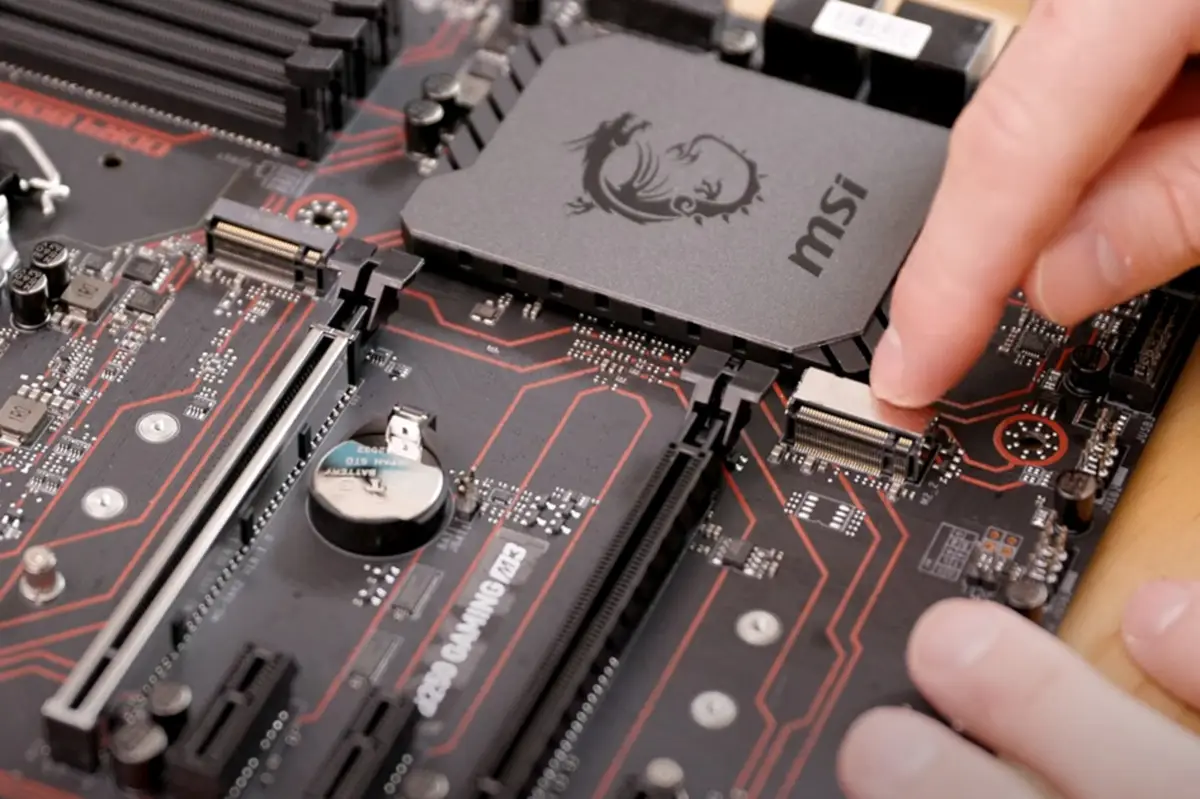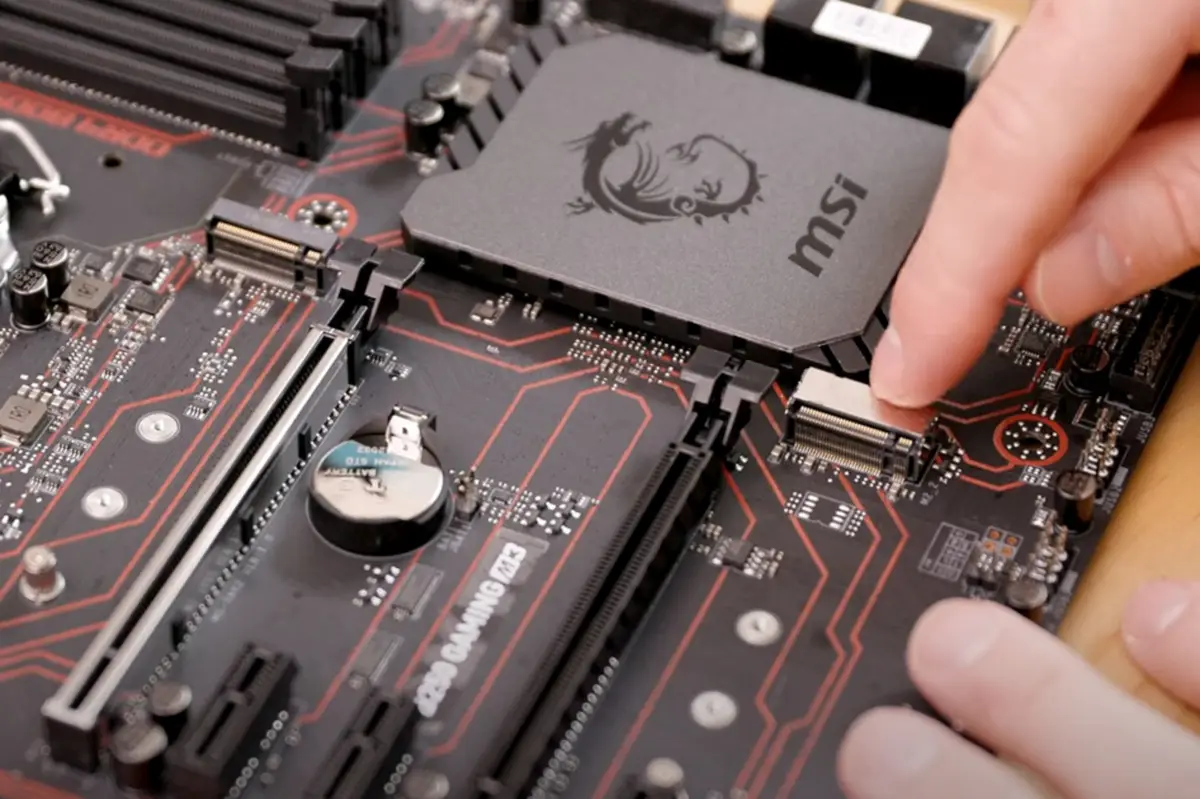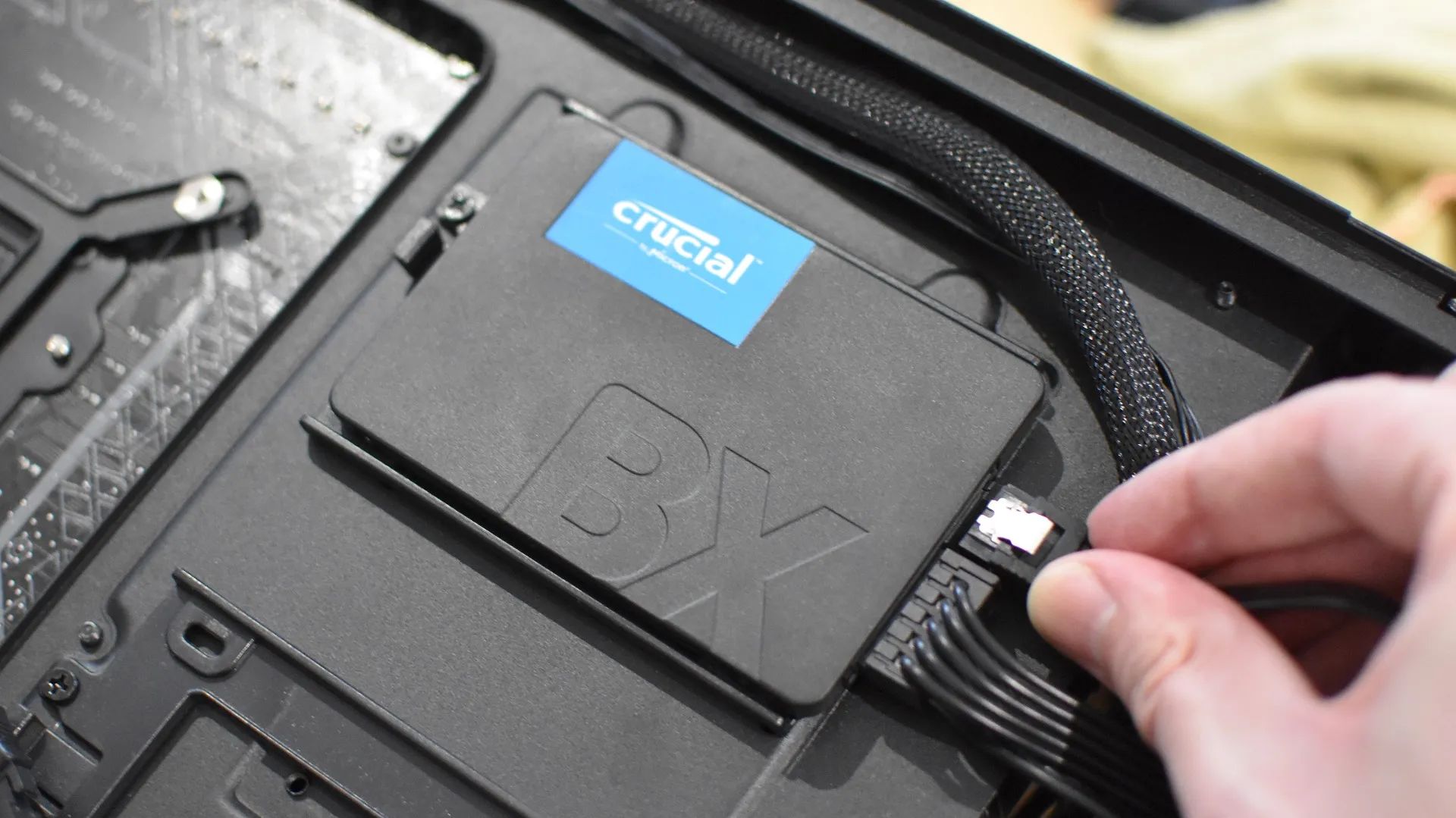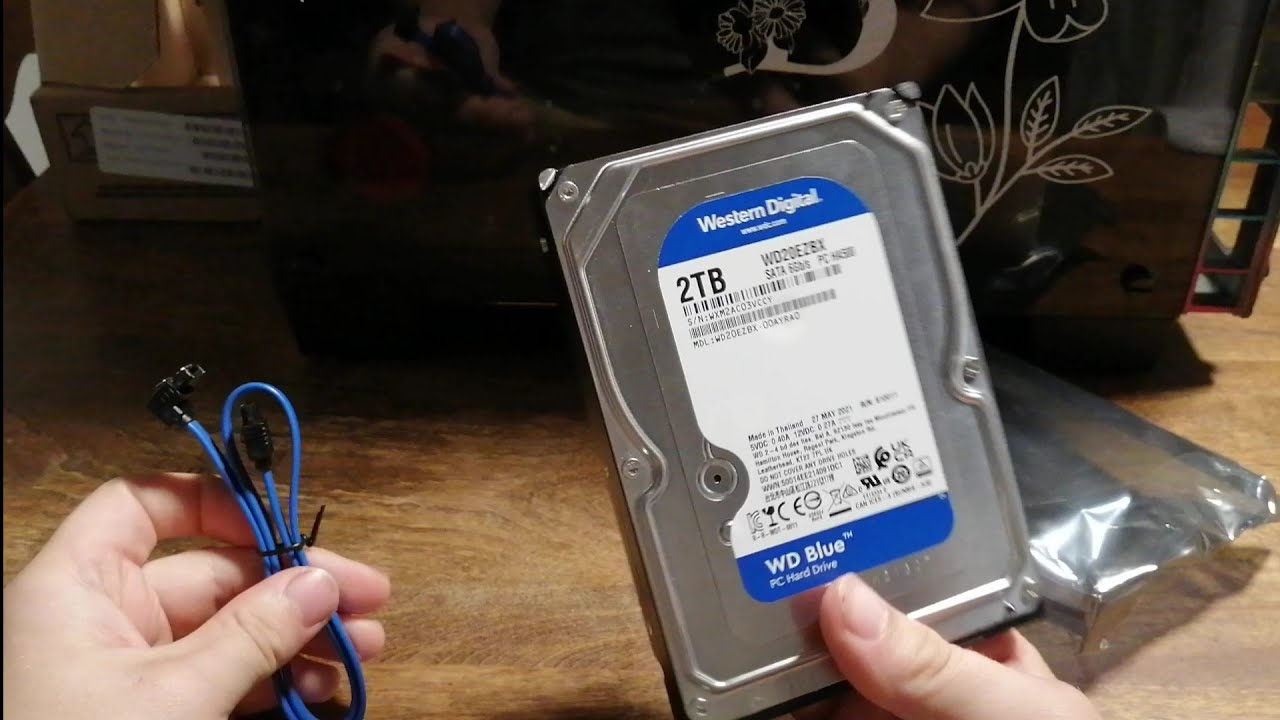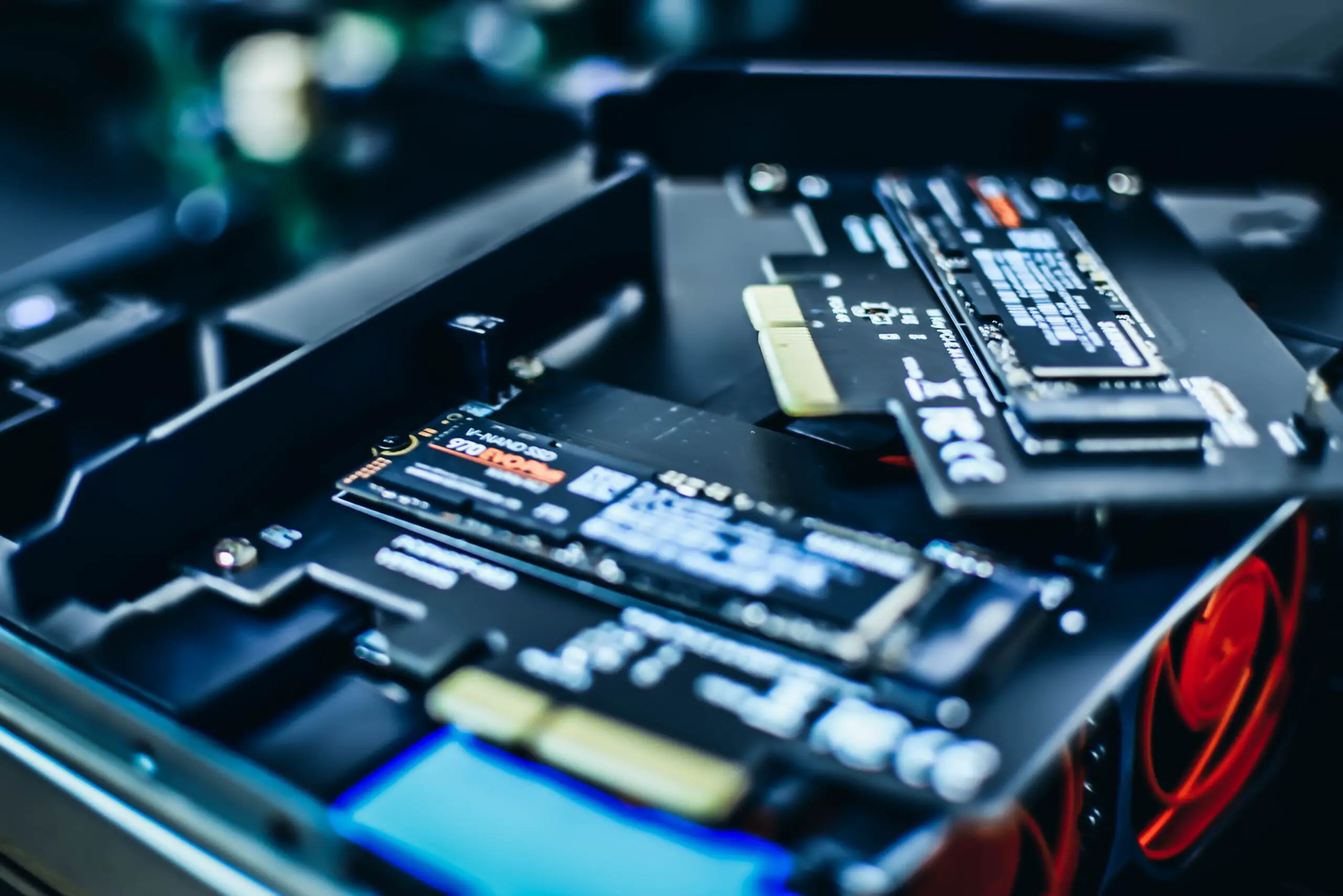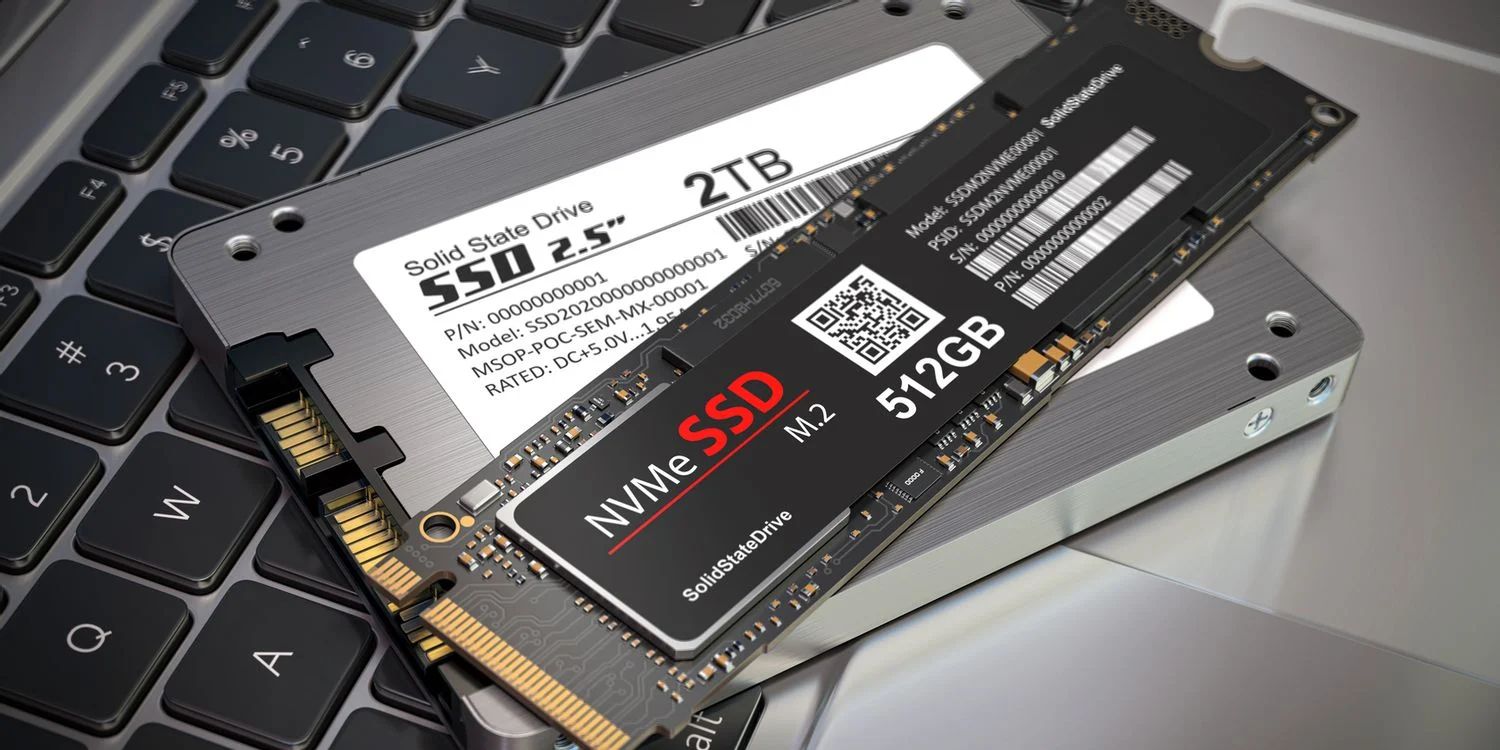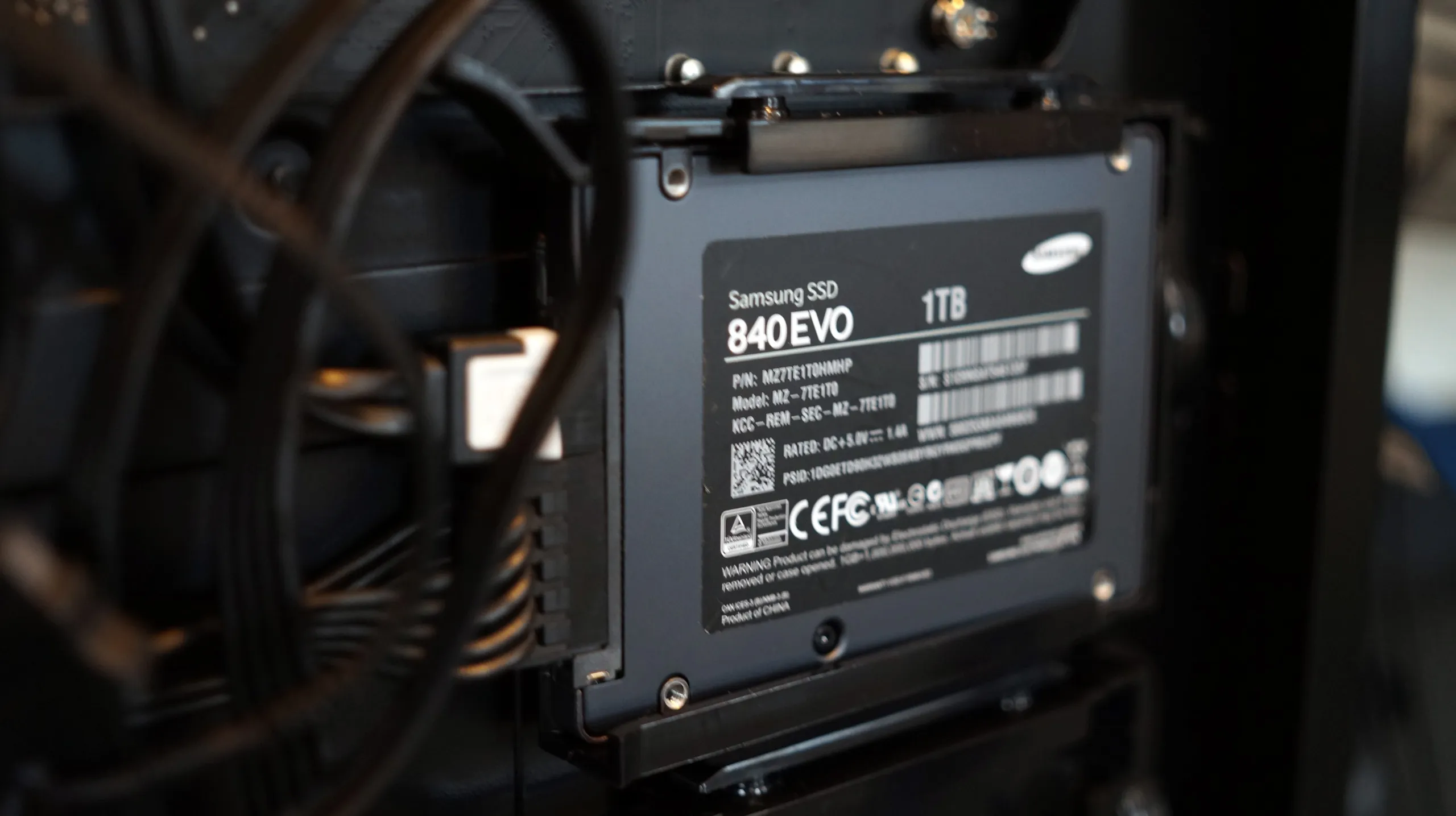Introduction
As technology continues to advance, the demand for faster and more efficient storage solutions has become increasingly prevalent. Solid-state drives (SSDs) have emerged as a notable alternative to traditional hard disk drives (HDDs) due to their superior performance and reliability. SSDs utilize flash memory to store data, resulting in faster read and write speeds, reduced power consumption, and improved durability.
But how many SSDs can a PC have? This question might arise when considering upgrading your storage or building a high-performance gaming or workstation rig. In this article, we will explore the possibilities and limitations of adding multiple SSDs to a PC.
Before diving into the details, let’s briefly cover the basics of SSDs. Unlike HDDs, which rely on spinning magnetic disks, SSDs utilize integrated circuits to store data. This eliminates the mechanical components found in HDDs, resulting in faster access times and reduced noise and heat generation.
There are two main types of SSDs: SATA (Serial ATA) and PCIe (Peripheral Component Interconnect Express). SATA SSDs connect to the computer’s motherboard using the standardized SATA interface, typically achieving sequential read and write speeds of up to 600MB/s. On the other hand, PCIe SSDs utilize the faster PCIe interface, enabling higher bandwidths and delivering even faster performance.
Now, let’s explore how many SSDs a PC can have and the factors that determine the maximum number. It’s important to note that when we refer to the number of SSDs, we are considering both SATA SSDs and PCIe SSDs collectively.
SSD Basics
Before delving into the number of SSDs a PC can have, it’s crucial to understand some fundamental aspects of these storage devices. SSDs, or solid-state drives, have gained immense popularity in recent years due to their impressive speed, exceptional performance, and enhanced durability compared to traditional hard disk drives (HDDs).
An SSD utilizes flash memory, a non-volatile type of storage that retains data even when the power is turned off. This differs from HDDs, which employ mechanical components and spinning disks to store and access data. The absence of moving parts in SSDs eliminates the risk of mechanical failure, resulting in increased reliability and improved data protection.
By storing data electronically instead of magnetically, SSDs offer significantly faster read and write speeds. This means that applications load faster, files transfer quickly, and the overall system performance is greatly enhanced. The increased efficiency and speed of SSDs make them ideal for tasks that demand high-speed data access, such as gaming, video editing, graphic design, and other resource-intensive activities.
Additionally, SSDs consume less power compared to HDDs. This makes them an excellent choice for laptops, as they help prolong battery life while still providing exceptional performance. Furthermore, the absence of noise generated by moving parts in SSDs contributes to a quieter and more peaceful computing experience.
SSDs come in various form factors, including the familiar 2.5-inch drives that resemble traditional HDDs, as well as smaller variants such as M.2 and PCIe SSDs. The 2.5-inch form factor can easily replace an existing HDD in most desktop or laptop setups, while M.2 SSDs are more compact and connect directly to the motherboard utilizing the M.2 slot. PCIe SSDs, on the other hand, connect through the PCIe interface for even faster data transfer rates.
In summary, SSDs offer numerous advantages over HDDs, including faster speeds, improved reliability, lower power consumption, and reduced noise. These benefits have made SSDs the preferred storage choice for many users, particularly those seeking high-performance computing and faster data access. Now, let’s explore how many SSDs a PC can accommodate, taking into account various factors and considerations.
SATA SSD vs PCIe SSD
When it comes to SSDs, two main types dominate the market: SATA (Serial ATA) SSDs and PCIe (Peripheral Component Interconnect Express) SSDs. Each offers its own set of advantages and considerations that are worth examining.
SATA SSDs, as the name suggests, connect to the motherboard via the SATA interface. This interface is widely supported and commonly found in desktop and laptop computers. SATA SSDs typically come in the 2.5-inch form factor and utilize the same power and data cables used by traditional mechanical hard drives. This makes upgrading from an HDD to a SATA SSD relatively straightforward.
One of the primary advantages of SATA SSDs is their cost-effectiveness. Compared to PCIe SSDs, SATA SSDs tend to be more affordable, making them a popular choice for users looking to upgrade from HDDs or add additional storage capacity. SATA SSDs also offer decent performance, with sequential read and write speeds reaching up to 600MB/s.
On the other hand, PCIe SSDs connect to the motherboard through the PCIe (Peripheral Component Interconnect Express) interface, which enables faster data transfer rates compared to SATA. PCIe SSDs utilize the high-bandwidth capabilities of PCIe lanes, resulting in significantly faster performance, especially for tasks that involve a high volume of data access, such as rendering videos or running demanding applications.
PCIe SSDs can come in different form factors, such as add-in cards or M.2 drives. M.2 PCIe SSDs, in particular, have gained popularity due to their compact size and direct connection to the motherboard, eliminating the need for additional cables. These drives can achieve blistering fast sequential read and write speeds, surpassing 3000MB/s in some cases.
Though PCIe SSDs offer superior performance, they tend to be more expensive than SATA SSDs, particularly in higher capacity options. However, for users who require top-tier performance, such as gamers or professionals working with large datasets, the investment in a PCIe SSD is often justified.
In summary, SATA SSDs are a cost-effective choice with decent performance, making them suitable for most users seeking an upgrade from HDDs. PCIe SSDs, on the other hand, provide significantly faster speeds and are ideal for those who require the utmost performance. The choice between the two depends on individual requirements and budget considerations.
How Many SSDs Can a PC Have?
When it comes to how many SSDs a PC can accommodate, the answer varies depending on several factors. In general, modern PCs can support multiple SSDs, allowing users to take advantage of increased storage capacity and improved performance. However, the precise number of SSDs a PC can have is influenced by specific factors and limitations.
Firstly, one of the essential considerations is the motherboard’s capabilities. The motherboard determines how many SATA and PCIe slots are available for connecting SSDs. SATA slots are commonly used for connecting SATA SSDs, while PCIe slots are used for PCIe SSDs. Most motherboards come with multiple SATA slots, allowing for the installation of several SATA SSDs. Additionally, high-end motherboards often feature multiple PCIe slots, enabling users to install multiple PCIe SSDs for optimal performance.
Another factor to consider is the power supply capacity. SSDs require power to operate, and the power supply unit (PSU) of the PC needs to have sufficient power connectors to support them. Each SSD typically requires a SATA power connector or a PCIe power connector, depending on the type of SSD. If the PSU doesn’t have enough power connectors for the desired number of SSDs, it may be necessary to upgrade to a higher wattage PSU or use power adapters or splitters to accommodate the additional drives.
Additionally, the physical space inside the PC case is a consideration. Different form factors of SSDs require different mounting options, and the case needs to have enough space to install the SSDs. The most common form factors, such as 2.5-inch SATA SSDs or M.2 SSDs, can be easily accommodated in most PC cases. However, larger add-in card PCIe SSDs may require larger cases or clearance in the expansion slots.
Lastly, it is worth considering the operating system and software limitations. Most modern operating systems, including Windows, macOS, and Linux, have no inherent limitations on the number of SSDs that can be used. However, some software or applications may have restrictions on the maximum number of drives they can recognize or manage efficiently. Therefore, it’s important to ensure that the software being used can handle the desired number of SSDs.
Ultimately, the maximum number of SSDs a PC can have depends on the combination of these factors. It is crucial to check the motherboard specifications, PSU capacity, physical space, and software compatibility to determine the maximum number of SSDs that can be installed. With careful consideration and planning, users can take full advantage of the benefits of multiple SSDs, such as increased storage capacity and improved performance.
Factors Affecting the Number of SSDs a PC Can Have
Several factors come into play when determining the maximum number of SSDs a PC can accommodate. These factors can vary depending on the specific hardware and configuration of the PC. Understanding these considerations is crucial for optimizing storage capacity and ensuring smooth operation. Let’s delve into the key factors affecting the number of SSDs that can be installed in a PC.
Motherboard Limitations: The motherboard plays a significant role in determining the number of SSDs a PC can support. It determines the available SATA and PCIe slots for connecting SSDs. Modern motherboards typically come with multiple SATA connectors, allowing for the installation of multiple SATA SSDs. High-end motherboards may also offer multiple PCIe slots to accommodate PCIe SSDs, which provide even faster speeds. Checking the motherboard’s specifications and available slots is essential for understanding the maximum SSD capacity.
Available PCIe Slots: PCIe slots are commonly used for connecting PCIe SSDs. The number of available PCIe slots on the motherboard limits the number of PCIe SSDs that can be installed. It is crucial to ensure that the motherboard provides enough slots for the desired number of drives. It’s also worth noting that some PCIe slots may share bandwidth with other components, potentially affecting performance. Checking the specifications and configurations of PCIe slots is essential to optimize SSD installation.
Power Supply Capacity: SSDs require power to function properly. The power supply unit (PSU) of the PC must have sufficient power connectors to support the intended number of SSDs. Each SSD typically requires a SATA power connector or a PCIe power connector, depending on the type of SSD. If the PSU does not have enough power connectors, it may be necessary to upgrade to a higher-wattage PSU or use power adapters or splitters to accommodate the additional drives.
Physical Space: The physical space inside the PC case is another consideration. Different SSD form factors require different mounting options, and the case needs to have enough space to install the SSDs. The most common form factors, such as 2.5-inch SATA SSDs or M.2 SSDs, can be easily accommodated in most PC cases. However, larger add-in card PCIe SSDs may require larger cases or clearance in the expansion slots. Ensuring that the case has adequate space for the desired number and form factors of SSDs is crucial.
SSD RAID Configurations: RAID (Redundant Array of Independent Disks) configurations can also impact the number of SSDs that can be used in a PC. RAID allows multiple drives to work together, improving performance, data redundancy, or both. However, specific RAID configurations may have limitations on the maximum number of drives they can support. It’s important to consider the desired RAID configuration and its limitations when determining the number of SSDs that can be installed.
Operating System and Software Limitations: While most modern operating systems have no inherent limitations on the number of SSDs, some software or applications may have restrictions on the maximum number of drives they can recognize or manage efficiently. If specific software is to be used with the PC, it’s essential to verify its compatibility and any limitations it may impose on the number of SSDs.
By taking into account these factors, users can determine the maximum number of SSDs that can be installed in their PC. Careful consideration of motherboard capabilities, available PCIe slots, power supply capacity, physical space, RAID configurations, and software compatibility will ensure optimal storage capacity and performance.
Motherboard Limitations
The motherboard is a crucial component in determining the maximum number of SSDs that a PC can support. It serves as the central hub for connecting various hardware components, including storage devices like SSDs. Understanding the limitations imposed by the motherboard is essential when considering how many SSDs can be installed in a PC. Here are some key aspects to consider:
SATA Connectors: SATA (Serial ATA) connectors are commonly used to connect SATA SSDs to the motherboard. These connectors provide a high-speed interface for data transfer between the SSDs and the system. The number of SATA connectors available on the motherboard determines the potential number of SATA SSDs that can be installed. Most modern motherboards come with multiple SATA connectors, allowing for the installation of several SATA SSDs.
PCIe Slots: PCIe (Peripheral Component Interconnect Express) slots are used to connect PCIe SSDs to the motherboard. These slots offer higher data transfer speeds compared to SATA connectors, resulting in improved performance for PCIe SSDs. The number of available PCIe slots on the motherboard affects the maximum number of PCIe SSDs that can be installed. High-end motherboards often feature multiple PCIe slots, enabling users to install multiple PCIe SSDs for optimal performance.
Supported Form Factors: Motherboards may have specific form factor requirements for SSDs. The most common form factors for SSDs are the 2.5-inch SATA drives and the M.2 drives. The 2.5-inch form factor requires a dedicated mounting bracket or slot, while M.2 drives connect directly to the motherboard via an M.2 slot. Some motherboards may also support other form factors, such as U.2 or PCIe add-in card SSDs. Checking the supported form factors of the motherboard is crucial to ensure compatibility with the desired SSDs.
Bandwidth Sharing: Some motherboards may have PCIe slots that share bandwidth with other components, such as graphics cards or network adapters. This means that the bandwidth available for PCIe SSDs may be limited when certain slots are in use. It is important to refer to the motherboard’s specifications to understand the potential bandwidth limitations and make informed decisions regarding the installation of multiple PCIe SSDs.
Overall Compatibility: While most modern motherboards support multiple SSDs, compatibility can vary between different models and manufacturers. It’s important to refer to the motherboard’s documentation or specifications to verify its compatibility with the desired number and type of SSDs. Ensuring compatibility will help avoid any issues or limitations when installing and utilizing multiple SSDs.
Carefully examining the motherboard’s capabilities and limitations is vital to determine the maximum number of SSDs that a PC can accommodate. By considering factors such as the number of SATA connectors, available PCIe slots, supported form factors, bandwidth sharing, and overall compatibility, users can plan and optimize their storage configuration effectively.
Available PCIe Slots
When considering the number of SSDs that a PC can have, one crucial factor to consider is the available PCIe slots on the motherboard. PCIe (Peripheral Component Interconnect Express) slots offer higher bandwidth and faster data transfer speeds, making them ideal for connecting PCIe SSDs. Here are some key points to consider regarding available PCIe slots:
Number of Slots: The number of PCIe slots on a motherboard will vary depending on the model and form factor. Entry-level motherboards may have a limited number of PCIe slots, while high-end motherboards often provide multiple slots. It’s essential to check the motherboard specifications or user manual to determine the number of available PCIe slots.
Compatibility: PCIe slots come in different generations, such as PCIe 3.0 and PCIe 4.0. It’s crucial to check the compatibility of the SSDs and the motherboard’s PCIe slot versions to ensure proper functionality and optimal performance. PCIe slots are generally backward-compatible, meaning a PCIe 4.0 SSD can be connected to a PCIe 3.0 slot, but it will operate at the lower PCIe 3.0 speeds.
Bandwidth: Each PCIe slot has a specific bandwidth capacity that determines the maximum data transfer rate. Different SSDs have varying bandwidth requirements, and it’s essential to consider the available bandwidth on each slot when installing multiple SSDs. Some motherboards may also designate certain PCIe slots for specific purposes, such as graphics cards, which may affect the available bandwidth for storage devices.
Slot Placement and Configuration: The physical placement and configuration of the PCIe slots can vary between motherboards. Some motherboards may arrange the slots in a way that restricts the use of certain slots when others are occupied. It’s important to consider the configuration of the PCIe slots, such as their spacing and their proximity to other components, to ensure proper installation and avoid any potential conflicts or limitations.
Expansion Cards and Adapters: In cases where the motherboard does not have enough PCIe slots or the desired slot configuration, expansion cards or adapters can be used to add additional slots. These expansion options can provide more flexibility in connecting multiple SSDs, allowing users to take full advantage of the available PCIe connectivity options.
By considering the number of available PCIe slots, compatibility, bandwidth, slot placement/configuration, and the use of expansion options, users can determine the maximum number of PCIe SSDs that can be installed in their PC. Optimizing the utilization of PCIe slots will help unlock the full potential of PCIe SSDs, providing faster data transfer speeds and enhanced storage performance.
Power Supply Capacity
When determining the number of SSDs that a PC can support, it’s crucial to consider the power supply capacity. SSDs require power to operate, and the power supply unit (PSU) in the PC needs to have sufficient capacity to supply power to all connected components, including the SSDs. Here are some key points to consider regarding power supply capacity:
Power Connectors: SSDs typically require power connectors to supply the necessary electrical current. SATA SSDs usually require a SATA power connector, while PCIe SSDs may require a PCIe power connector. Each SSD will have specific power requirements, and it’s important to ensure that the PSU has enough appropriate power connectors to accommodate the number of SSDs being installed. Insufficient power connectors can limit the number of SSDs that can be supported.
Power Wattage: SSDs have varying power consumption levels, depending on their type and capacity. It’s essential to check the power consumption specifications of the SSDs being used and ensure that the PSU can provide enough overall power output to handle the combined requirements. The PSU’s wattage rating determines its capacity to provide power to the entire system, including the SSDs, along with other components like the CPU, graphics card, and peripherals. Upgrading to a higher-wattage PSU may be necessary to support a larger number of SSDs.
Power Supply Efficiency and Certification: PSU efficiency is an important consideration when it comes to power supply capacity. Higher-efficiency PSUs generally waste less energy and can provide a greater proportion of their rated wattage to the components. PSU efficiency is indicated by various certification ratings, such as 80 Plus Bronze, Silver, Gold, and Platinum. Choosing a PSU with a higher efficiency rating ensures better utilization of available power and reduces the risk of power-related issues when multiple SSDs are in use.
Power Load Distribution: Distributing power load evenly across the PSU’s rails is crucial for maintaining system stability and preventing power-related issues. It’s recommended to connect the SSDs to different power rails on the PSU, rather than concentrated on a single rail. This helps distribute the power load and reduces the chances of overloading a particular rail, ensuring optimal power supply to all connected SSDs.
Power Adapters and Splitters: In cases where the PSU lacks sufficient power connectors for the desired number of SSDs, power adapters or splitters can be used to convert or split existing connectors to support multiple SSDs. However, it’s important to note that excessive use of adapters or splitters can potentially overload the PSU or impact power stability, so they should be used with caution and within the PSU’s limitations.
By ensuring that the PSU has adequate power connectors, wattage capacity, efficiency, and proper power load distribution, users can determine the maximum number of SSDs that the PC can support. Working within the PSU’s limits and considering power-related aspects will help ensure stable and reliable power supply to all connected components, including the SSDs.
SSD RAID Configurations
When considering the number of SSDs a PC can have, it’s important to explore the possibilities offered by SSD RAID configurations. RAID (Redundant Array of Independent Disks) allows multiple drives to function as a single logical unit, offering various benefits such as improved performance, data redundancy, or a combination of both. Here are some RAID configurations to consider when maximizing the potential of multiple SSDs:
RAID 0 (Striping): RAID 0 combines multiple SSDs into a single logical drive, distributing data across all drives simultaneously. This results in increased read and write performance as data is written and retrieved simultaneously from multiple drives. However, it’s important to note that RAID 0 does not provide data redundancy or protection. The failure of one SSD in a RAID 0 configuration will result in data loss from the entire array.
RAID 1 (Mirroring): RAID 1 involves creating an exact copy (mirror) of data on each SSD. This provides redundancy and ensures that data is preserved even if one SSD fails. Although RAID 1 offers data protection, it does not offer improved performance compared to a single SSD. The usable capacity of the RAID 1 array is half of the total SSD capacity since each SSD is mirrored.
RAID 5 and RAID 6 (Striping with Parity): RAID 5 and RAID 6 configurations offer a balance between performance and data redundancy. RAID 5 requires a minimum of three SSDs and distributes data across the drives along with parity information. This allows for continued operation and recovery in the event of a single SSD failure. RAID 6, on the other hand, requires a minimum of four SSDs and provides an additional level of redundancy by allowing for the simultaneous failure of two SSDs. Both RAID 5 and RAID 6 configurations offer improved read performance and data protection.
RAID 10 (Combination of Mirroring and Striping): RAID 10 combines the benefits of both mirroring (RAID 1) and striping (RAID 0). It requires a minimum of four SSDs and offers enhanced performance and data redundancy. Data is striped across multiple mirrored pairs of SSDs, resulting in improved read and write performance. The loss of one SSD within each mirrored pair can be tolerated without losing data or compromising performance.
RAID Levels and Maximum Number of SSDs: The maximum number of SSDs that can be used in a RAID configuration will depend on the RAID level chosen and the capabilities of the RAID controller or software. RAID levels like 0, 1, 5, 6, and 10 can typically support multiple SSDs, with some configurations allowing for larger numbers of drives, depending on the RAID controller’s capabilities and the system’s performance requirements.
It’s important to consult the documentation of the RAID controller or software being used to determine the maximum number of SSDs that can be supported in a specific RAID configuration. By configuring SSDs in RAID arrays, users can optimize both performance and data protection according to their specific needs and requirements.
Conclusion
Determining how many SSDs a PC can have involves considering several factors, including motherboard limitations, available PCIe slots, power supply capacity, SSD RAID configurations, and software compatibility. Modern motherboards typically provide multiple SATA connectors and PCIe slots, allowing for the installation of multiple SSDs, both SATA and PCIe. However, the number of SSDs that can be supported will depend on the specific specifications and capabilities of the motherboard.
The power supply capacity is another critical factor to consider, ensuring that there are sufficient power connectors and wattage to support the SSDs. Upgrading to a higher-wattage power supply may be necessary for systems with multiple SSDs. Physical space inside the PC case and software limitations should also be taken into account to ensure smooth installation and compatibility with the desired number of SSDs.
SSD RAID configurations provide additional possibilities for maximizing performance or data redundancy. RAID 0 offers increased performance through data striping, but no data protection. RAID 1 provides data redundancy with mirroring. RAID 5 and RAID 6 configurations offer a balance between performance and data redundancy, while RAID 10 combines mirroring and striping for enhanced performance and data protection.
By carefully considering all of these factors, users can determine the maximum number of SSDs their PC can accommodate and optimize storage capacity, performance, and data protection. It’s important to consult the documentation and specifications of the motherboard, power supply, and RAID controller or software being used to ensure compatibility and optimal system performance.
Adding multiple SSDs to a PC can significantly enhance storage capacity, speed up data access, and improve overall system performance. Whether you are an avid gamer, a content creator, or a professional seeking faster and more efficient storage solutions, understanding the factors that influence the number of SSDs a PC can have will help you make informed decisions and create a setup tailored to your needs.







